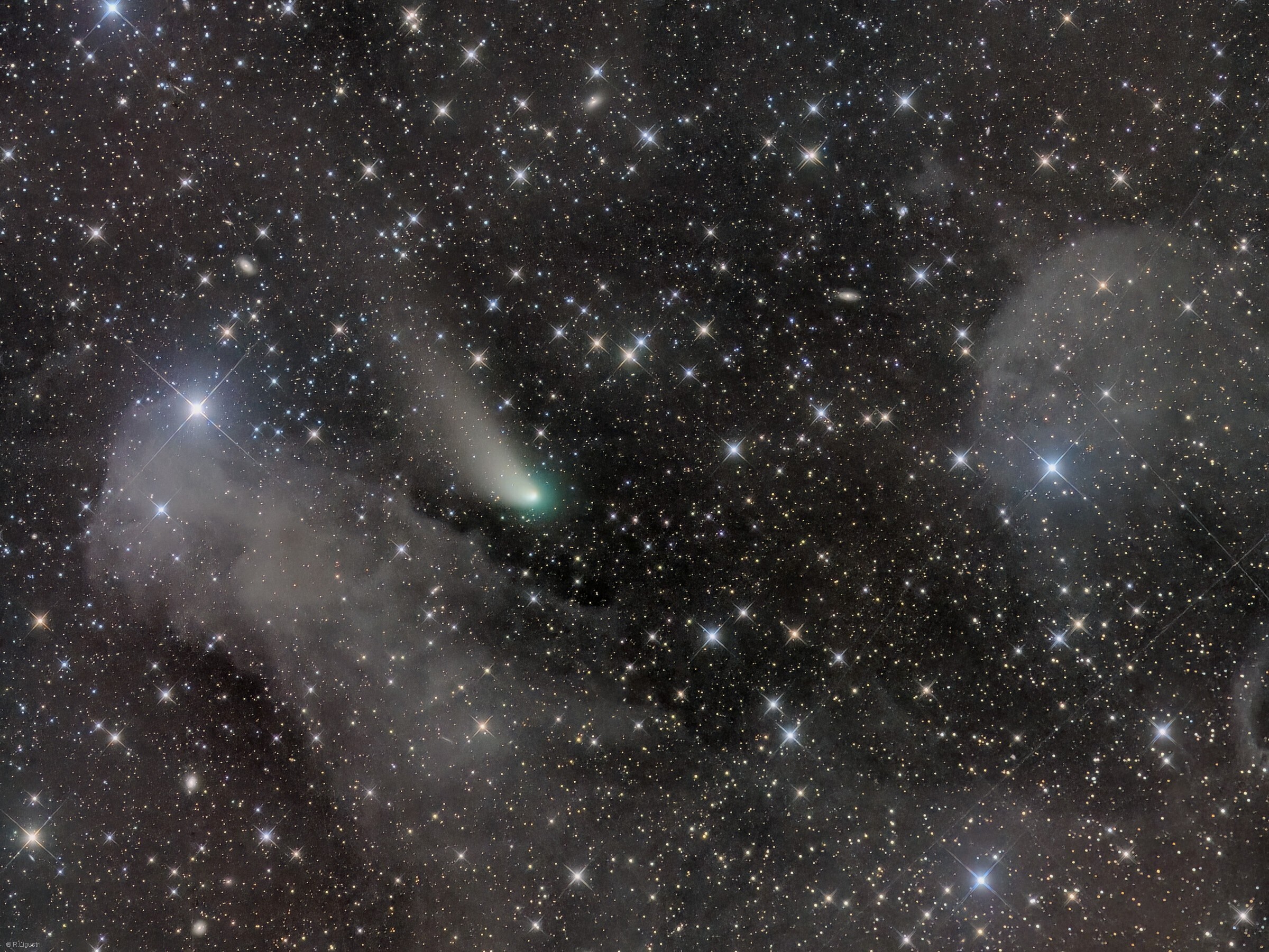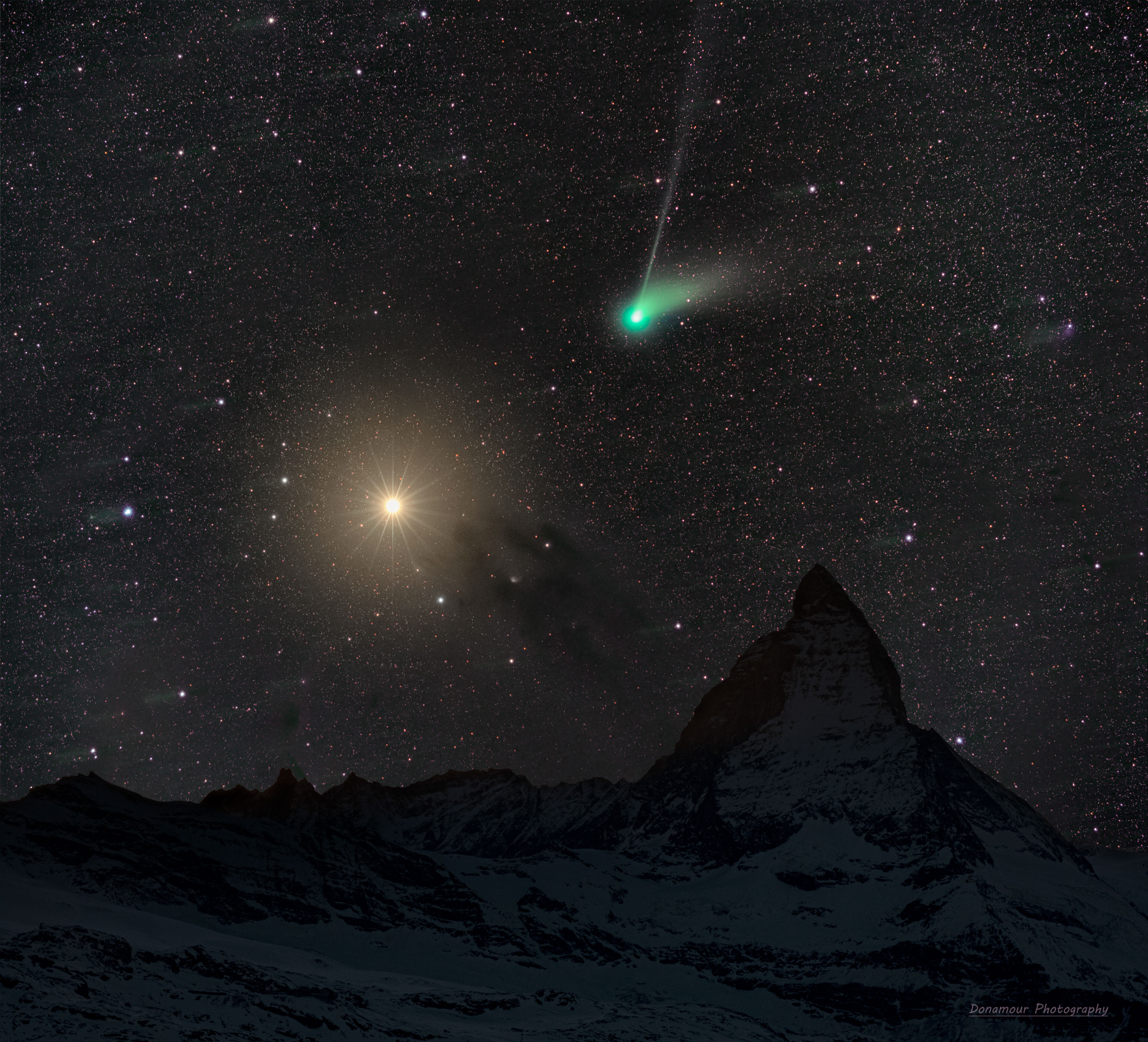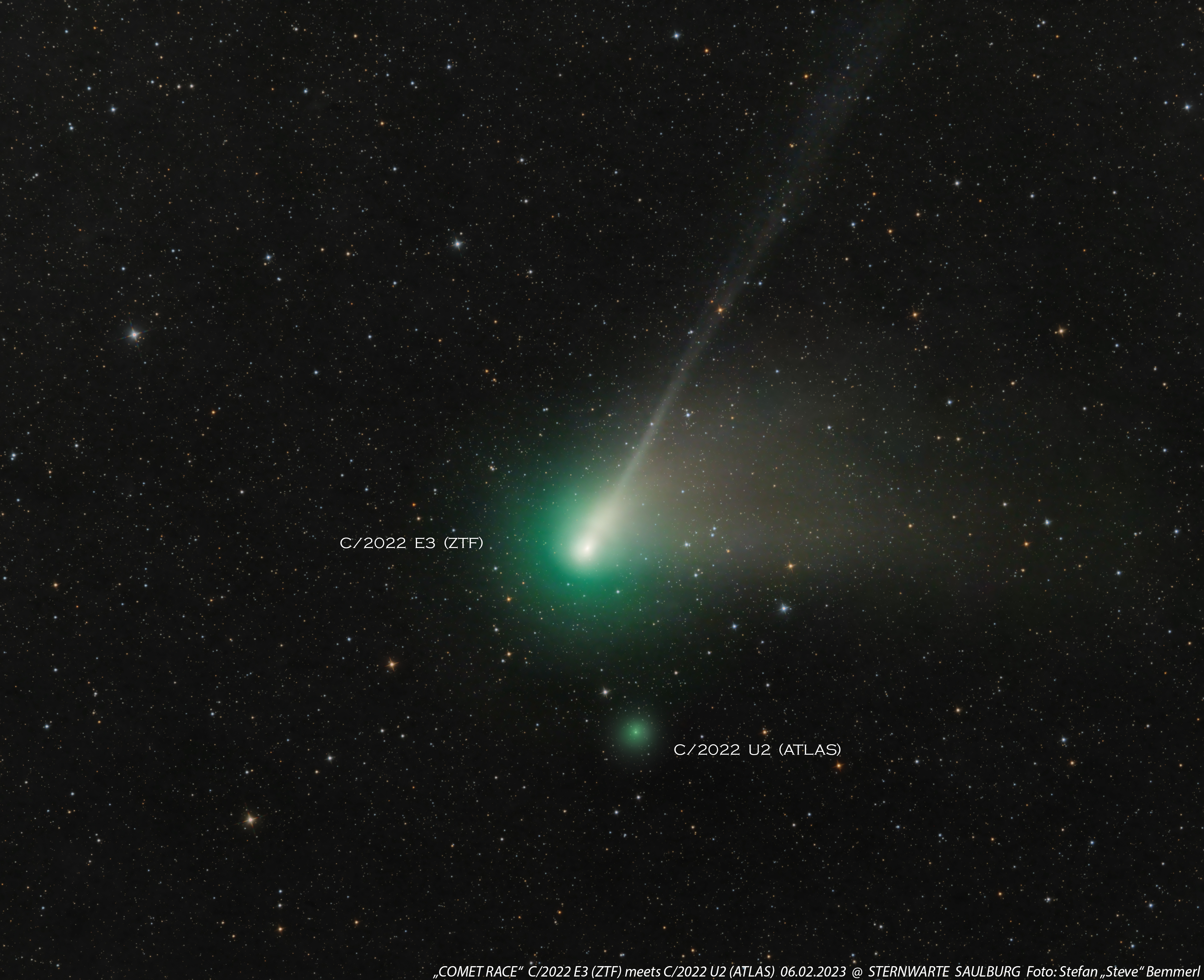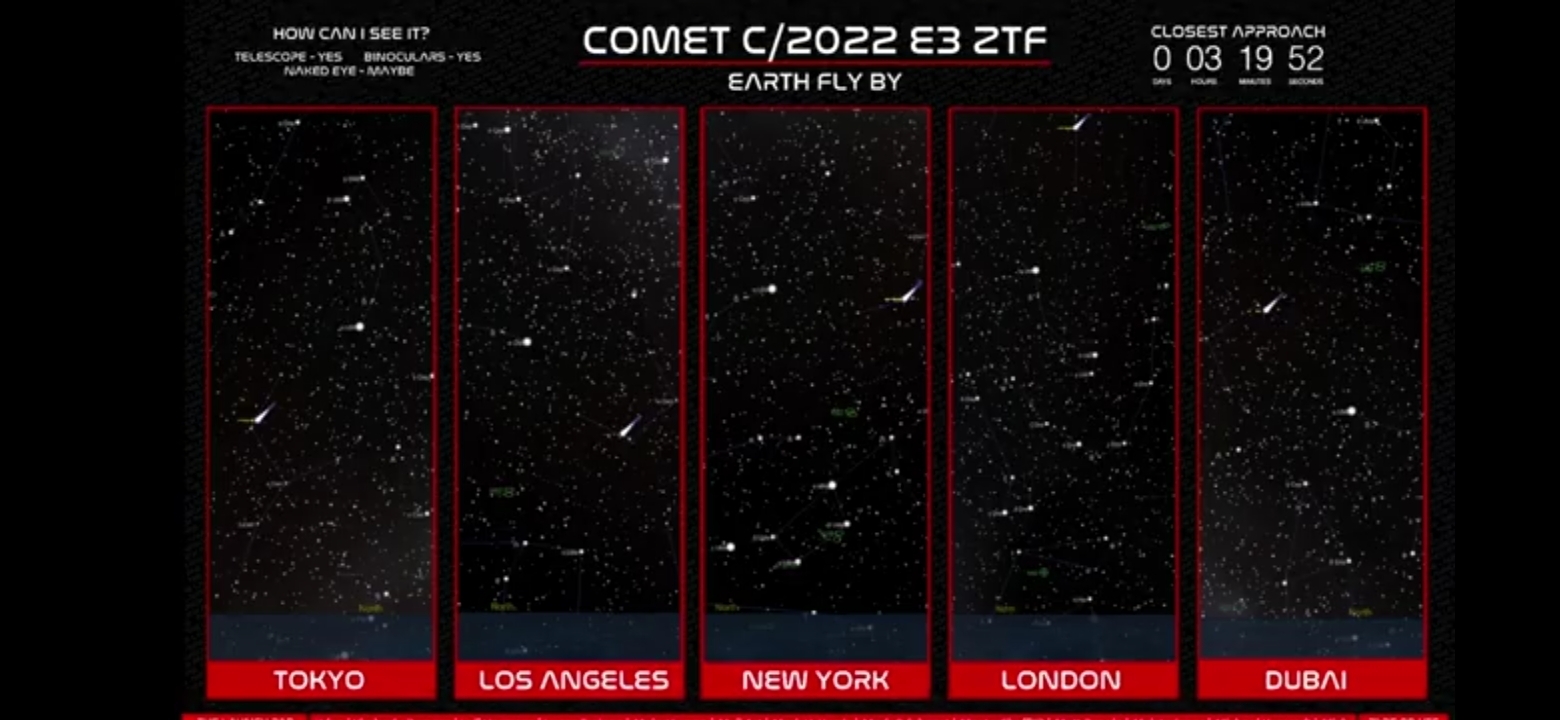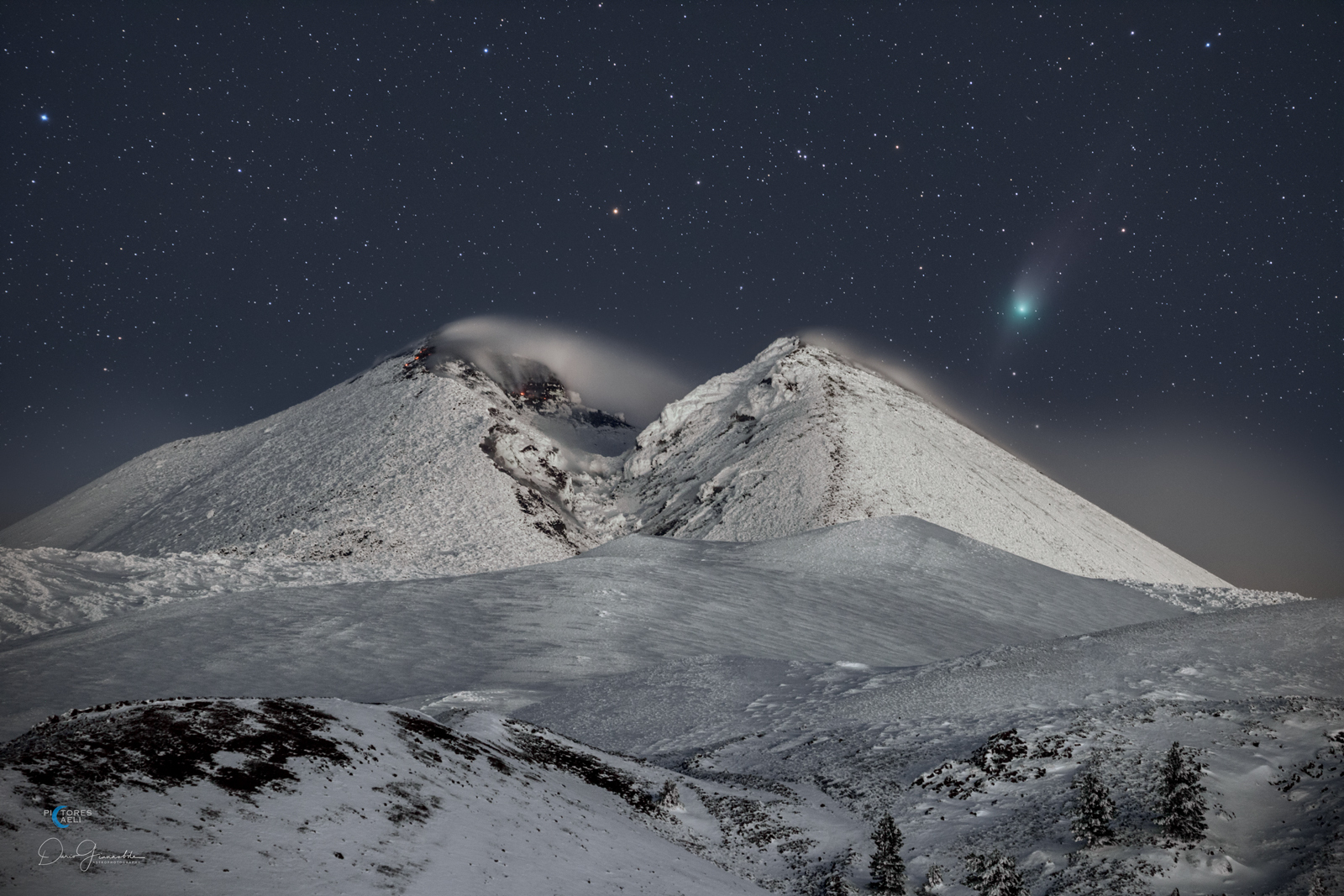#ztf
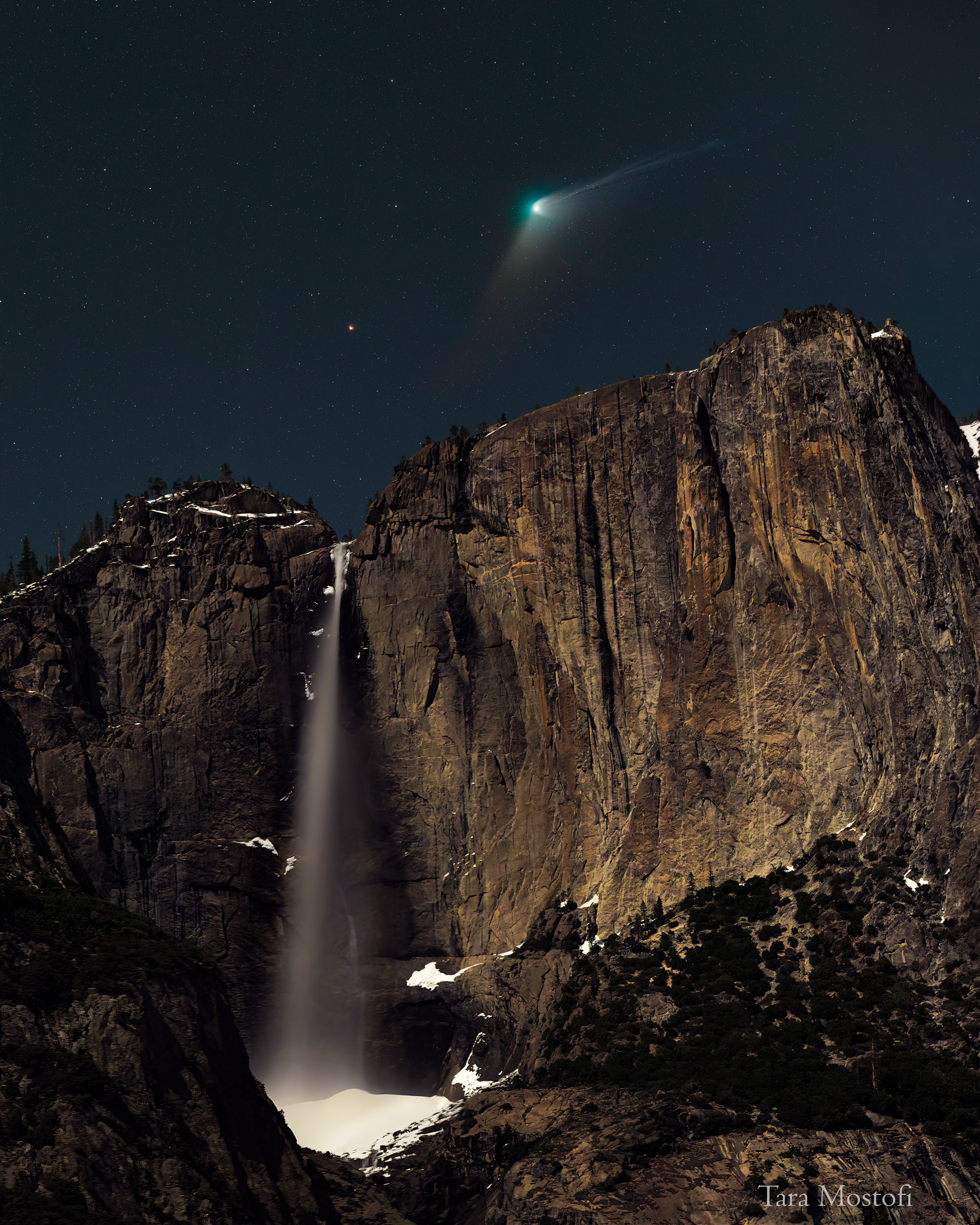
#Comet #ZTF over #YosemiteFalls
#Astronomy #Picture of the Day
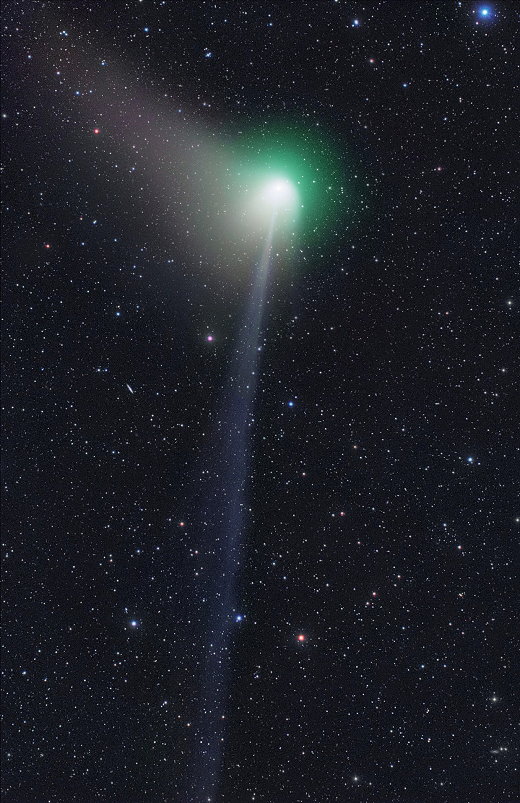
COMET #ZTF HAS ARRIVED: It only took 50,000 years. During the #StoneAge, faraway Comet ZTF (C/2022 E3) began falling toward the inner solar system. Today it finally reached #Earth, only 0.28 AU away. This is what the comet looks like from point-blank range:
"There is a strong curved dust tail, a long blue ion tail, and a vivid green coma," says photographer Michael Jaeger of Weißenkirchen in der Wachau, Austria. "It's a beautiful comet."
The ensemble is now glowing with an integrated magnitude near +4.8. It is barely visible to the naked eye (at best, a faint smudge), but a terrific target for small telescopes. Northern observers are favored. The comet is racing through Camelopardalis (the Giraffe), a constellation near the Big Dipper and the North Star. The best time to look is during the dark hours between midnight and dawn after the Moon has set.
#SUN ERUPTS BIG AT THE #COMET #sonews
https://www.bitchute.com/video/uObvWV1HtTMx/
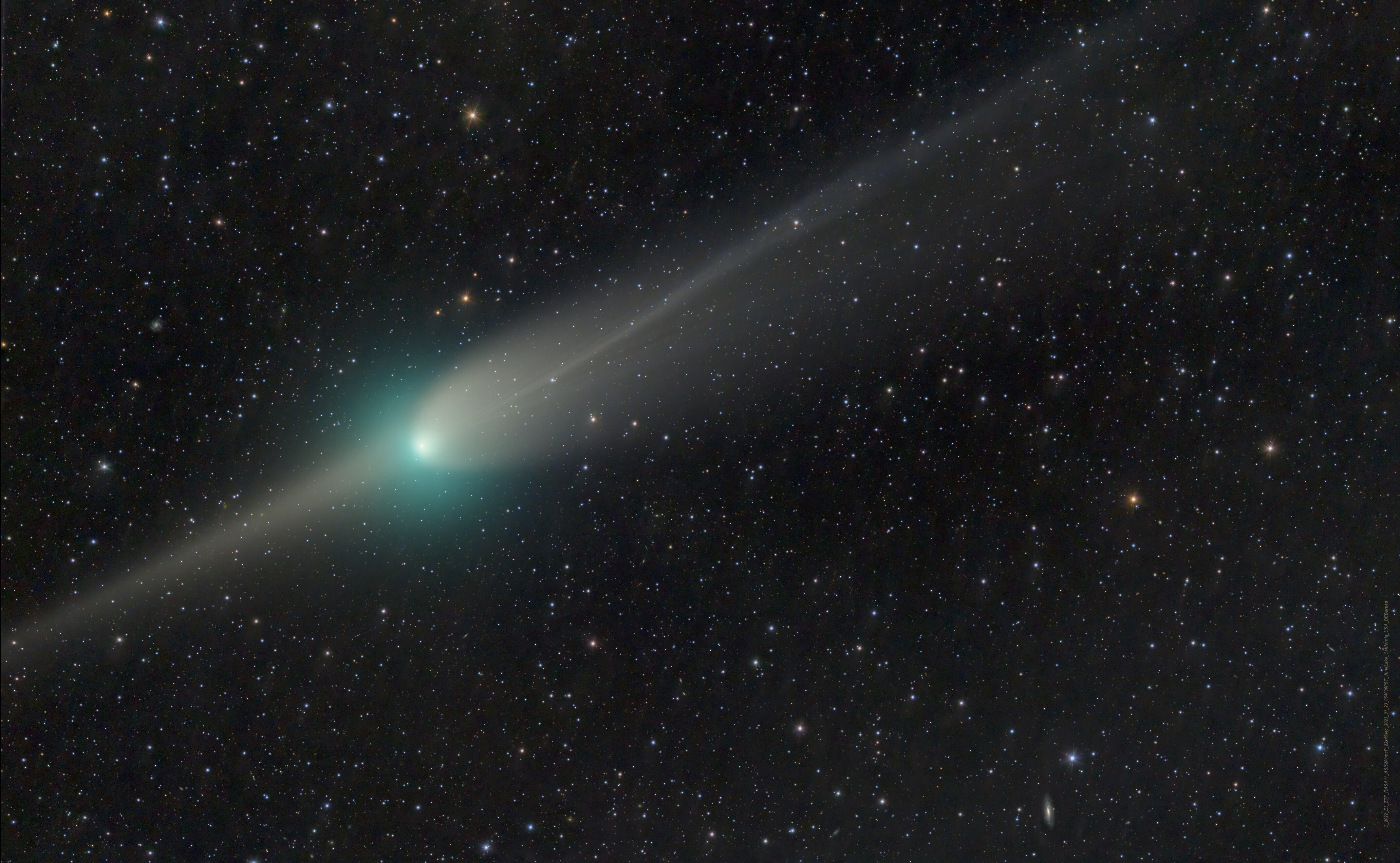
#Comet #ZTF: Orbital Plane Crossing
#Astronomy #Picture of the Day
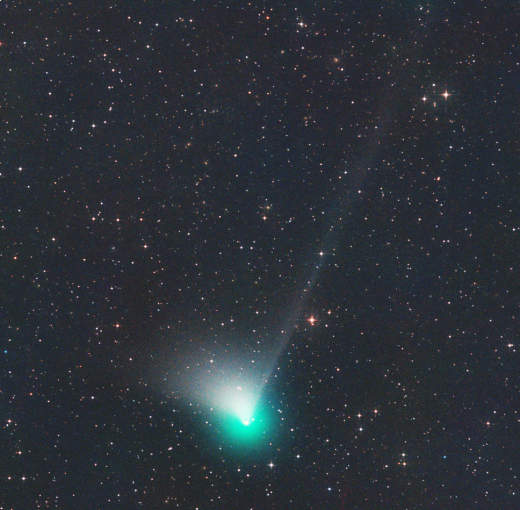
#COMET ALERT: If it's not too late, ask for a telescope for Christmas. Comet #ZTF (C/2022 E3) is approaching Earth for a close encounter next month, and it already looks great. Michael Jaeger photographed the two-tailed interplanetary snowball from his backyard observatory in Martinsberg #Austria:
"This comet has become an exciting object," says Jaeger, "Although it will not reach maximum brightness until late January or February, it already shows two tails and a bright green atmosphere."
Discovered in March 2022 by the Zwicky Transient Facility, Comet ZTF is falling in from the outer solar system. Perihelion (closest approach to the sun) will occur on Jan. 12, 2023, at a distance of 1.11 AU. Closest approach to Earth follows on Feb. 1, 2023, at a distance of 0.28 AU. Between those two dates, the comet could hit magnitude 5 or 6, technically visible to the unaided eye.
The two tails Jaeger saw are the dust tail and the ion tail. The ion tail is made of gas and is blown directly away from the sun by the solar wind. The heavier dust tail is curved and more closely traces the comet's orbit.
According to Jaeger, the comet is currently 8th magnitude, which makes it an easy target for mid-sized backyard telescopes. A new Moon over Christmas weekend will provide invitingly dark skies for comet-finding.
